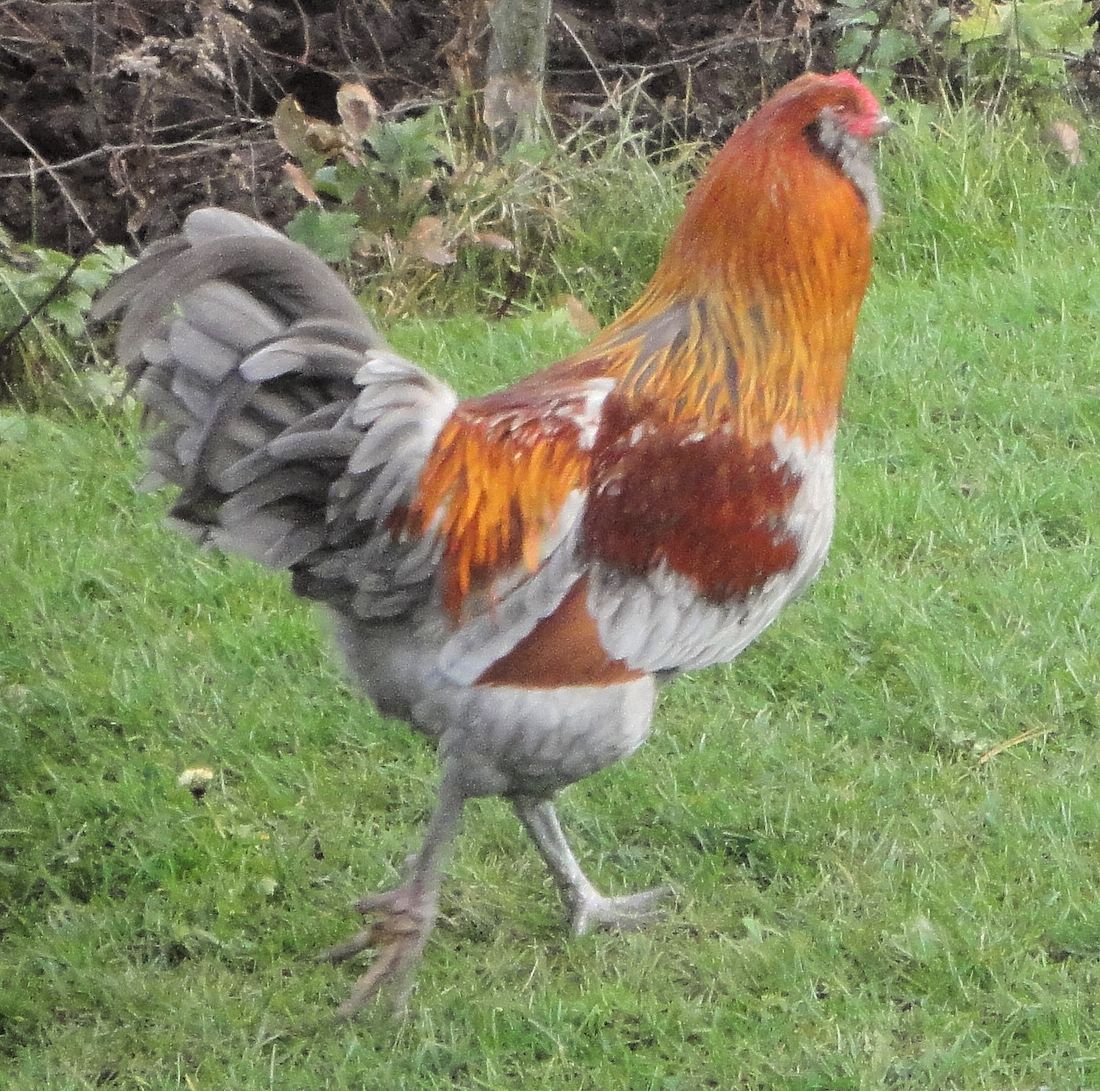 Half of all the chicks I hatch each year are little roosters. That means at least thirty-five young male birds have to find homes. I only sell pullets with a rooster to make sure some males go quickly. Everyone wants hens—roosters, not so much. By selling trios and quartets, two or three pullets with a cockerel, I assure five or six roosters leave the farm. Luckily there are people looking for just roosters and I usually sell ten or so that way every summer. By fall there are usually at least a dozen or more extra males hanging around. I reserve two or three of the very best for my own flock and will keep a few more of the nicest roosters through the winter to sell at a premium in the early spring when people are looking for breeders.
Half of all the chicks I hatch each year are little roosters. That means at least thirty-five young male birds have to find homes. I only sell pullets with a rooster to make sure some males go quickly. Everyone wants hens—roosters, not so much. By selling trios and quartets, two or three pullets with a cockerel, I assure five or six roosters leave the farm. Luckily there are people looking for just roosters and I usually sell ten or so that way every summer. By fall there are usually at least a dozen or more extra males hanging around. I reserve two or three of the very best for my own flock and will keep a few more of the nicest roosters through the winter to sell at a premium in the early spring when people are looking for breeders.
Sometimes in early fall I take several of the ones that are least desirable for breeding on a one-way trip to Greaney’s Turkey Farm, the last stop for many fine eating birds. Greaney’s takes care of the slaughtering, plucking, cleaning, butchering and cooling of the birds. After the quartered birds are vacuum bagged, I pop them in a chest with ice and bring them home for the freezer. Some people may be squeamish about eating animals they have raised from eggs. Not me. I know that while they lived, the roosters had the very best of lives, free ranging and enjoying happy times with their siblings. They ate healthy foods and lived as well and naturally as modern chickens can hope. They make very good eating for farmers.
The breed I raise, Ameraucana, is a dual purpose chicken. This means they can be used for egg and meat production. They have good-sized, well muscled bodies. A cockerel slaughtered at about six months dresses out around 3.5 lbs, the perfect size to make stew. The only problem with eating yard birds, as the chickens running around the yard are called, is that they can be a bit tough. All that exercise really conditions their muscles.
 The secret to good yard bird stew is brining. Soaking the meat in a salt solution will tenderize it. After the bird is slaughtered, the meat should be allowed to rest in the refrigerator for a couple days so the rigor mortis wears off. Then the meat can be cooked or frozen. This recipe will make a nice stew for four or five people. Start three days ahead of the planned meal.
The secret to good yard bird stew is brining. Soaking the meat in a salt solution will tenderize it. After the bird is slaughtered, the meat should be allowed to rest in the refrigerator for a couple days so the rigor mortis wears off. Then the meat can be cooked or frozen. This recipe will make a nice stew for four or five people. Start three days ahead of the planned meal.
To make the brine, add 3/4 cup salt to three quarts of water. Bring to a boil in a 6 qt pot. Let the brine cool completely. Place the quartered chicken in the cooled brine, assuring all the meat is submerged. Cover the pot and store in the refrigerator for two days. Then drain off the brine, rinse well and refill the pot with cold, fresh water to cover the chicken. The fresh water will pull out the salt. Refrigerate overnight. In the morning drain the water, fill the pot of chicken with fresh water again and let sit in the refrigerator for the rest of the day.
About two hours before dinner time, drain off the water, rinse the chicken well, then add two quarts of water and cook the chicken until it starts to pull away from the bone. Shut off the heat under the pot, remove the chicken from the pot, let it cool until it can be handled, pull all the meat from the bones and cut to bite size pieces. At this time any excess fat floating on the broth in the pot can be skimmed.
Turn the heat to medium, put the cut chicken in the pot with 5 or 6 peeled, sliced carrots, 5-6 peeled medium potatoes, a cup of fresh or frozen green peas, a couple cubes of chicken bouillon, celery salt, pepper, rosemary, sage, marjoram, oregano and onion powder to taste. Cook until veggies are just getting tender. Remove cover and reduce heat to low, simmer for fifteen to twenty minutes to reduce the stock.
At this time dumplings can be cooked in the pot or the stew is ready to serve with fresh buttered bread or rolls. To make dumplings, mix 2.5 cups all purpose flour, 1/2 cup white whole wheat flour, 4.5 teaspoons baking powder, 1 teaspoon salt and 1 3/4 cups milk in a bowl until a soft dough forms. Drop the dough into the stew broth by tablespoons full. Cover and gently simmer for 12 minutes. There will be no tough chicken in this stew.

